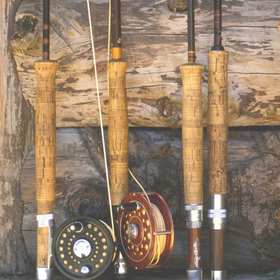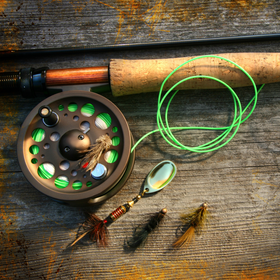Baetis or BWO: Understanding the Confusion
Baetis, pronounced (bay-tuss), is a small mayfly that often confuses fly fishers trying to identify ongoing hatches precisely. To complicate matters, Baetis is a family of insects, and what fly fishers commonly call the Blue Wing Olive (BWO) is actually a sub-species. Generally, the term BWO is used to identify any mayfly smaller than size 16 with an olive body.
Simplifying Identification
For most anglers, precise scientific identification isn’t necessary. Knowing the approximate size and color is usually sufficient to find a suitable fly in your box. Baetis are notoriously small, making them hard for both anglers and fish to see. The smaller the insect, the less exact the pattern needs to be, as small patterns have fewer features to trigger a ‘fake alarm’ in fish. Additionally, Baetis hatches can be so prolific that fish become less selective, increasing the chances they’ll strike your imitation.
Hatch Variability
Baetis sub-species can have up to five hatches per year, each potentially looking slightly different. Factors such as the time of year, time of day, and the diet of the nymph can affect the hatch’s appearance. Sometimes, despite an olive hatch, trout may prefer an Adams fly. Trout don’t see what we see, and despite claims from various authors, it’s uncertain exactly what fish perceive.
Common Names and Imitations
While Blue Wing Olive is the most common name used by fly fishers, other terms include Blue Dun, Little Olive, Tiny Olives, and Little Slate Winged Olive. Scientific identification is less important than finding a good imitation.
Key Facts About Baetis
- Hatch Timing: Baetis can hatch any time of year when water temperatures are above 40°F, preferring cloudy days. Hatches typically occur from mid-morning to mid-afternoon.
- Size: They are small, down to size 24. Winter hatches tend to be smaller than summer hatches.
- Nymphs and Emergers: Nymphs are excellent swimmers, while emergers are not and tend to rise on bubbles or hang in the surface film.
- Color: Predominantly olive, but can also be brownish or grayish. Wings are usually various shades of gray with slight blue tones.
- Egg Laying: Females lay eggs underwater and are often swept away by the current, making wet fly imitations effective.
Fishing Tips
There are likely more imitations for Baetis than any other insect genus. Multiple species can be present simultaneously, especially in spring and summer. Fish can be selective about the stage of life they are feeding on rather than the exact color. Emergers are often taken more aggressively than duns. Patience and skill are crucial—present your fly drag-free and delicately, with a parachute pattern being particularly effective. Timing spinner falls can be challenging, as sub-species and time of year play significant roles.
Call to Action: Ready to tackle the challenge of Baetis hatches? Equip yourself with a variety of imitations and practice your presentation skills. Understanding these little mayflies can significantly enhance your fly fishing success. Happy fishing! 🎣




